Matt Hanson in Quillette:
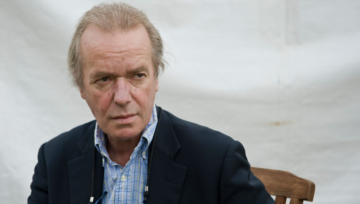 Maybe one sign of being an important writer is how much attention you receive when you die. Tributes to and remembrances of Martin Amis, who died last week at 73, have been appearing all over the place, like fresh bouquets of sympathy sent to a funeral. I almost found myself lazily inserting the phrase “after a long battle with cancer” to specify the conditions of his demise, but since Amis was famously at war with cliches, this would not do. Amis refused to hide his taste, his opinions, and above all, his style under a bushel, and this is why people loved him on both sides of the Atlantic.
Maybe one sign of being an important writer is how much attention you receive when you die. Tributes to and remembrances of Martin Amis, who died last week at 73, have been appearing all over the place, like fresh bouquets of sympathy sent to a funeral. I almost found myself lazily inserting the phrase “after a long battle with cancer” to specify the conditions of his demise, but since Amis was famously at war with cliches, this would not do. Amis refused to hide his taste, his opinions, and above all, his style under a bushel, and this is why people loved him on both sides of the Atlantic.
Having Kingsley Amis as a father would be a blessing and a curse for anyone, though Amis generally chose to emphasize the former in his memoirs.
More here.

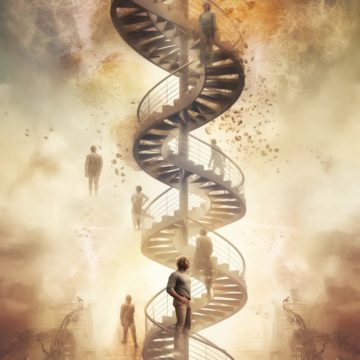 Will we ever decipher the language of molecular biology? Here, I argue that we are just a few years away from having accurate in silico models of the primary biomolecular information highway — from DNA to gene expression to proteins — that rival experimental accuracy and can be used in medicine and pharmaceutical discovery.
Will we ever decipher the language of molecular biology? Here, I argue that we are just a few years away from having accurate in silico models of the primary biomolecular information highway — from DNA to gene expression to proteins — that rival experimental accuracy and can be used in medicine and pharmaceutical discovery. At the end of the Korean war in 1953, captured American soldiers were allowed to return home. To widespread amazement, some declined the offer and followed their captors to China. A popular explanation quickly emerged. The Chinese army had undertaken an unusual project with its prisoners of war: through intense and sustained attempts at persuasion—using tactics such as sleep deprivation, solitary confinement, and exposure to propaganda—it had sought to convince them of the superiority of communism over capitalism. Amid the general paranoia of 1950s McCarthyism, the fact that such techniques had apparently achieved some success produced considerable alarm. The soldiers had been “
At the end of the Korean war in 1953, captured American soldiers were allowed to return home. To widespread amazement, some declined the offer and followed their captors to China. A popular explanation quickly emerged. The Chinese army had undertaken an unusual project with its prisoners of war: through intense and sustained attempts at persuasion—using tactics such as sleep deprivation, solitary confinement, and exposure to propaganda—it had sought to convince them of the superiority of communism over capitalism. Amid the general paranoia of 1950s McCarthyism, the fact that such techniques had apparently achieved some success produced considerable alarm. The soldiers had been “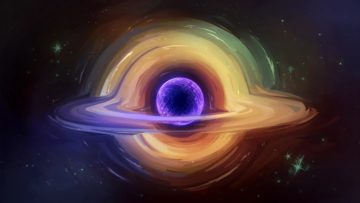 When an ice cube melts and attains equilibrium with the liquid, physicists usually say the evolution of the system has ended. But it hasn’t — there is life after heat death. Weird and wonderful things continue to happen at the quantum level. “If you really look into a quantum system, the particle distribution might have equilibrated, and the energy distribution might have equilibrated, but there’s still so much more going on beyond that,” said
When an ice cube melts and attains equilibrium with the liquid, physicists usually say the evolution of the system has ended. But it hasn’t — there is life after heat death. Weird and wonderful things continue to happen at the quantum level. “If you really look into a quantum system, the particle distribution might have equilibrated, and the energy distribution might have equilibrated, but there’s still so much more going on beyond that,” said 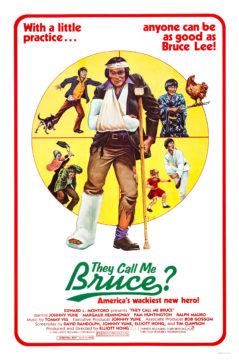 In the conventional canon of Asian American cinema, you’re unlikely to find They Call Me Bruce mentioned. This is in spite of the fact that it arrived right after Wayne Wang’s lauded debut, Chan Is Missing (1982), as arguably the second Asian American feature to ever gain theatrical distribution (and probably the first to turn a substantial profit). This makes its absence from the canon all the more curious, and both They Call Me Bruce and its primary creators are overdue a reconsideration.
In the conventional canon of Asian American cinema, you’re unlikely to find They Call Me Bruce mentioned. This is in spite of the fact that it arrived right after Wayne Wang’s lauded debut, Chan Is Missing (1982), as arguably the second Asian American feature to ever gain theatrical distribution (and probably the first to turn a substantial profit). This makes its absence from the canon all the more curious, and both They Call Me Bruce and its primary creators are overdue a reconsideration. It wasn’t the singing; it was the song. When Deanie Parker hit her last high note in the studio, and the band’s final chord faded behind her, the producer gave her a long, appraising look. She’d be great onstage, with those sugarplum features and defiant eyes, and that voice could knock down walls. “You sound good,” he said. “But if we’re going to cut a record, you’ve got to have your own song. A song that you created. We can’t introduce a new artist covering somebody else’s song.” Did she have any original material? Parker stared at him blankly for a moment, then shook her head.
It wasn’t the singing; it was the song. When Deanie Parker hit her last high note in the studio, and the band’s final chord faded behind her, the producer gave her a long, appraising look. She’d be great onstage, with those sugarplum features and defiant eyes, and that voice could knock down walls. “You sound good,” he said. “But if we’re going to cut a record, you’ve got to have your own song. A song that you created. We can’t introduce a new artist covering somebody else’s song.” Did she have any original material? Parker stared at him blankly for a moment, then shook her head. Birders are a funny bunch, mostly—at this festival, anyway—white, older-aged, and of a delightfully inefficient temperament. In general, they talk and move at a relaxed pace, and are eager to dedicate long moments of their lives to matters that many people simply whisk past. On a geology tour my mom and I took on our third day in Hays, the group revolted and made the guide turn the van around just to take pictures of a flock of turkeys. Later, about a half hour was spent on a quiet debate over whether a falcon in a far-off tree was a kestrel or a much more uncommon merlin. I listened to a man trying in vain for several minutes to describe the position of the falcon to the woman next to him: “It’s in the backmost tree, up there on the white branch. There are a lot of light branches. But no! There’s only one white branch.” Over the course of the trip, time seemed to slow down to match the geologic scale suggested by the ancient mating rituals of the prairie chickens and the landscape that surrounds them: sprawling fields of grass punctuated by chalk formations left over from Kansas’s past beneath the Cretaceous-era Western Interior Seaway.
Birders are a funny bunch, mostly—at this festival, anyway—white, older-aged, and of a delightfully inefficient temperament. In general, they talk and move at a relaxed pace, and are eager to dedicate long moments of their lives to matters that many people simply whisk past. On a geology tour my mom and I took on our third day in Hays, the group revolted and made the guide turn the van around just to take pictures of a flock of turkeys. Later, about a half hour was spent on a quiet debate over whether a falcon in a far-off tree was a kestrel or a much more uncommon merlin. I listened to a man trying in vain for several minutes to describe the position of the falcon to the woman next to him: “It’s in the backmost tree, up there on the white branch. There are a lot of light branches. But no! There’s only one white branch.” Over the course of the trip, time seemed to slow down to match the geologic scale suggested by the ancient mating rituals of the prairie chickens and the landscape that surrounds them: sprawling fields of grass punctuated by chalk formations left over from Kansas’s past beneath the Cretaceous-era Western Interior Seaway.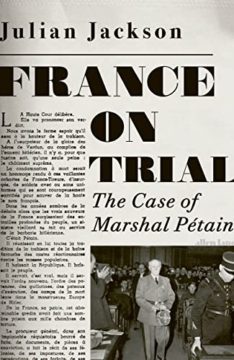 O
O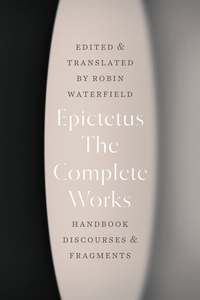 The
The For at least the last 400 million years, insects have ruled the world. The first insect fossils are nearly twice as old as the oldest dinosaur. They were the first animals to fly, and that adaptation helped them to spread to every corner of the planet. They survived four of the five mass extinctions in Earth’s history. Then, a mere 200,000 years ago, a new species appeared in East Africa and started to spread over the surface of their planet. In a geologic blink, modern humans were everywhere, hunting and farming and changing the world to fit our needs and desires. It was inevitable that these two dominant animals would come to affect each other in profound ways, both positive and negative.
For at least the last 400 million years, insects have ruled the world. The first insect fossils are nearly twice as old as the oldest dinosaur. They were the first animals to fly, and that adaptation helped them to spread to every corner of the planet. They survived four of the five mass extinctions in Earth’s history. Then, a mere 200,000 years ago, a new species appeared in East Africa and started to spread over the surface of their planet. In a geologic blink, modern humans were everywhere, hunting and farming and changing the world to fit our needs and desires. It was inevitable that these two dominant animals would come to affect each other in profound ways, both positive and negative. The inner workings of the large language models at the heart of a chatbot are a black box; the
The inner workings of the large language models at the heart of a chatbot are a black box; the  I briefly moved back to Rhode Island following the collapse of my first marriage. It was the summer before I turned twenty-seven, and I spent three months hiding away in my childhood bedroom, grief-damaged and humiliated by the task of trying to figure out who and how I was supposed to be. My husband and I had managed to stay married for only four years, the last of which I spent watching from the sidelines as he enjoyed an unexpectedly rapid and very public rise as an artist. His newly minted success introduced a host of newly minted problems, and I drifted through most of that winter and spring weeping in the utility closet at the boutique where I worked and asking him where I fit into his life so many times that I eventually didn’t fit into it at all.
I briefly moved back to Rhode Island following the collapse of my first marriage. It was the summer before I turned twenty-seven, and I spent three months hiding away in my childhood bedroom, grief-damaged and humiliated by the task of trying to figure out who and how I was supposed to be. My husband and I had managed to stay married for only four years, the last of which I spent watching from the sidelines as he enjoyed an unexpectedly rapid and very public rise as an artist. His newly minted success introduced a host of newly minted problems, and I drifted through most of that winter and spring weeping in the utility closet at the boutique where I worked and asking him where I fit into his life so many times that I eventually didn’t fit into it at all.